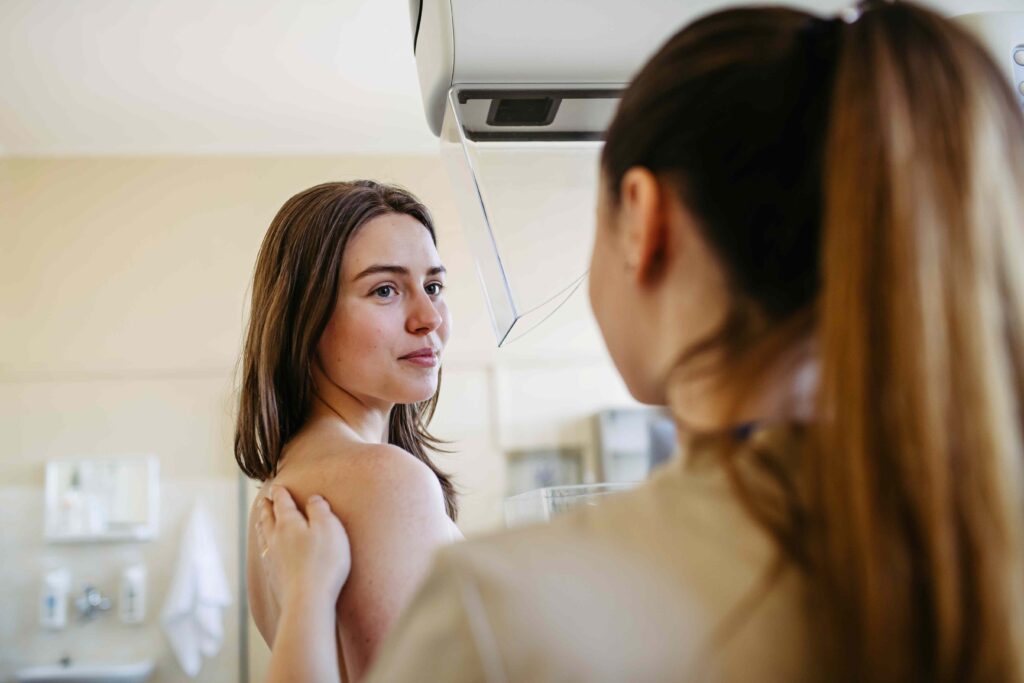Going in for a mammogram isn’t always a painless process—from concerns about costs to discomfort during the procedure itself, many people end up skipping their recommended breast cancer screening.
However, according to new research, doing so could be detrimental to your health.
A study published on Sept. 25 in the BMJ found that women who skipped their first mammogram ended up having a higher risk of advanced-stage breast cancer later on. They also saw a 40% higher risk of death from the disease.
“The women who did not attend their first screening were more likely to miss future screening,” Jean Bao, MD, a breast surgical oncologist and clinical associate professor of surgery at the Stanford University School of Medicine, told Health. “That delayed diagnosis may contribute to the higher stage of cancer at diagnosis and the higher mortality.”
In this new study, researchers looked at over 430,000 Swedish women from 1991 to 2020. Guidelines changed slightly over that time—initially, women were encouraged to get their first mammogram at age 50, but after 2005, the age was lowered to 40.
Over the course of 25 years, the researchers documented 16,059 breast cancer cases, and compared cases and deaths against participants’ adherence to recommended mammogram guidance.
They found that people who chose not to get their first mammogram as recommended had a:
- 40% higher risk of dying from breast cancer
- 53% higher risk of being diagnosed with stage 3 breast cancer
- 260% higher risk of being diagnosed with stage 4 breast cancer
Missing an initial mammogram was also associated with a higher likelihood of skipping future breast cancer screenings.
Interestingly, this new study found that there weren’t large differences in the number of cancer cases between the two groups over the 25-year period:
- 7.8% of people who went to their first mammogram were diagnosed with breast cancer.
- 7.6% of people who delayed getting their mammogram were diagnosed with breast cancer.
This indicates that the cohort of women who skipped their first mammogram didn’t have more or worse breast cancer cases, but that their cases were caught at later stages, when they were more deadly.
“[Mammography] screening can detect cancer at an earlier size, at an earlier stage,” Bao said. “So when you delay your mammograms or if you omit mammogram screening, [then] when you have a cancer, it may be at a larger size.”
Missing mammograms is also a key driver of breast cancer inequalities seen in the U.S. According to the Centers for Disease Control and Prevention (CDC), people facing barriers such as social isolation, lack of transportation, food or housing insecurity, and high health care costs are less likely to be up to date with their screenings.
These social determinants of health help explain why women of color and those with lower socioeconomic statuses often have worse breast cancer outcomes.
The U.S. Preventive Services Task Force recommends that women ages 40 to 75 get mammography screening every two years. However, estimates show that about 25% of Americans aren’t keeping up with those recommendations.
In addition to barriers like lack of transportation and cost concerns, fear of pain during the procedure is another common reason people avoid getting screened, Bao said.
But going is crucial. “It’s not a fun exam but it’s an important one,” Bao emphasized.
In fact, she said, getting a mammogram every other year may not be enough in some cases.
“A lot of other societies—including the American Society of Breast Surgeons, the American College of Radiology—they all recommend annual screening,” she explained.
That’s something Bao recommends for her patients, particularly if they have a family history of breast cancer or have had abnormal biopsies in the past.
Whether 40 is fast-approaching and you’re due for your first mammogram—or it’s something you’ve been putting off—going in for that initial screening can be daunting. But being prepared and open can make the process easier.
Be Ready for Some Discomfort
“I think we all wish we were a little more prepared going into the first mammogram—it’s not comfortable,” Bao warned.
During a mammogram, she explained, the healthcare provider compresses the breast tissue so they can see any abnormalities or tumors. But that means there’s “a lot of pulling and tugging and compression,” Bao said.
Luckily, each compression only lasts about 15 seconds, Bao said—and the whole procedure takes around 15 minutes.
Still, “if the discomfort becomes too much, speak up during the procedure,” advised Bao.
Talk About It
Mammograms can be a pain—literally—but they’re also life-saving.
“Increasing awareness is important—letting people know about the importance of screening mammograms and the safety of the test,” Bao said.
Talk to your friends and family about your upcoming mammogram. Healthcare providers should also broach those conversations with their patients, especially if someone is falling behind on their screenings.
“Those who miss their first screening are more likely to die from breast cancer,” she said. “But I think it really tells us that there is a window of possible intervention.” If a provider sees that a patient has missed their first mammogram, the team should follow up to help close that gap.


